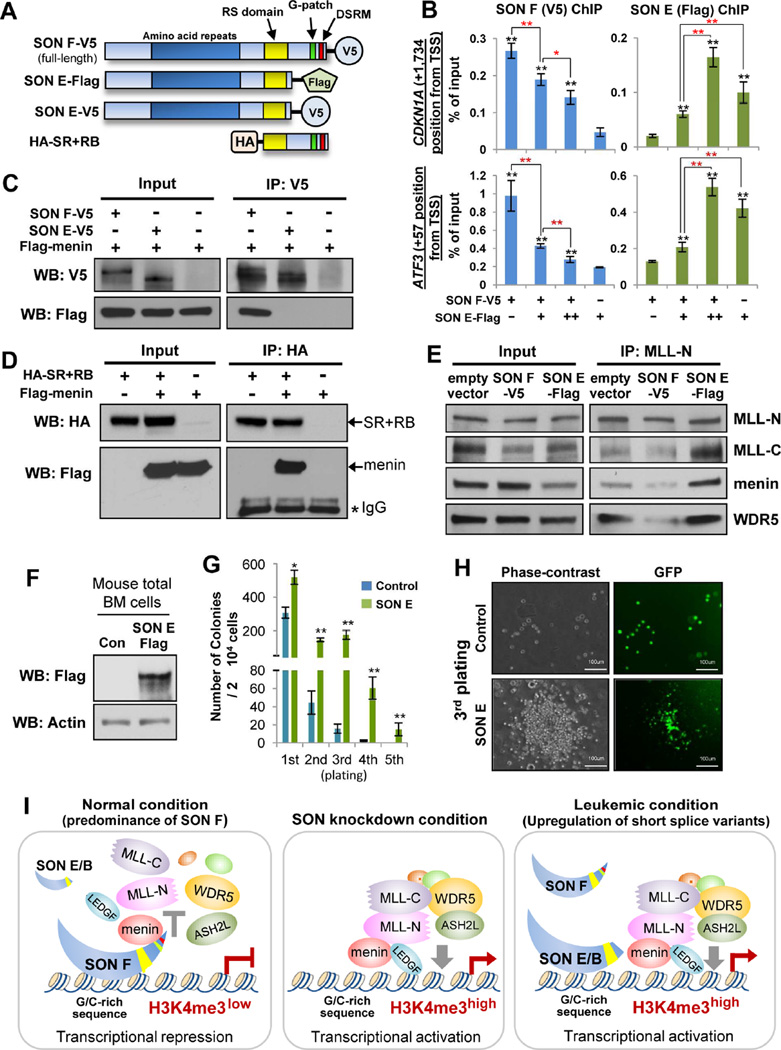Figure 7. SON E Competes with Full-length SON for Target DNA binding, but Fails to Interact with Menin, Attenuating SON F’s Inhibitory Effect on MLL Complex Assembly and SON E Overexpression Enhances Replating Potential of Hematopoietic Progenitors.
(A) Schematic diagram of expression constructs used for the experiments presented in panels B – E; V5-tagged SON F (full-length), Flag-tagged SON E, V5-tagged SON E, and the HA-tagged SON C-terminal fragment containing the RS domain and RNA-binding motifs (SR+RB).
(B) ChIP-qPCR analysis of SON F-V5 or SON E-Flag binding on target regions near the TSS of CDKN1A. Five µg (+) of SON F-V5 constructs plus increasing amounts of SON E-Flag, 5 (+) or 10 µg (++) constructs were used for transfection into K562 cells. Shown are representative results of three independent experiments (mean ± S.D. from triplicate). Black asterisks indicate statistical significances of SON F-V5 or SON E-Flag enrichment, as compared to the background signal from negative control samples (SON E Flag-only sample in V5-ChIP and SON F-V5-only sample in Flag ChIP). Red asterisks indicate statistical significance of the difference between two indicated samples. *p < 0.05, **p < 0.01.
(C) Co-immunoprecipitation (IP) experiments demonstrating the lack of menin-binding ability of SON E. Lysates of HEK 293 cells co-transfected with Flag-menin and SON F-V5 or SON E-V5 were subjected to IP with anti-V5, followed by Western blotting with indicated antibodies.
(D) The C-terminus of SON interacts with menin. The HA-tagged SR+RB fragment was expressed in HEK 293 cells with or without Flag-menin, and subjected to HA-IP followed by Western blotting with HA or Flag antibodies.
(E) SON E overexpression enhances the interactions between MLL complex components, while SON F overexpression shows inhibitory effects. Empty vector (pcDNA3), SON F-V5, or SON E-Flag were transfected into K562 cells (without depletion of endogenous SON) and nuclear extract was used for immunoprecipitation with MLL-N antibody followed by Western blotting with indicated antibodies.
(F) Western blot verifying overexpression of SON E in primary mouse bone marrow cells infected with lentivirus carrying flag-tagged SON E.
(G) Number of colony-forming units in serial replating assay using primary mouse bone marrow cells infected with lentivirus carrying the control vector or SON E. The results represent 3 independent experiments. *p < 0.05, **p < 0.01.
(H) Representative images of control cells and the colony formed by SON E-overexpressing cells in the third round of the replating assay.
(I) Models for SON and its isoform function in transcription. Under normal conditions, SON binds G/C-rich sequence near the transcription start site to inhibit transcriptional activity. Interaction of the SON C-terminal region with menin diminishes MLL complex assembly and its recruitment to target DNA, leading to the low level of H3K4me3 and transcriptional repression. Upon SON depletion, MLL complex formation is facilitated, resulting in enhanced recruitment of the MLL complex and subsequent increase of H3K4me3 and promoter activity. In leukemic condition, a high level of short SON isoforms (SON B and SON E) interrupts DNA-binding of full-length SON, but cannot interfere with MLL-menin interaction, resulting in abrogation of the full-length SON function and de-repression/activation of multiple leukemia-associated genes. See also Figure S7.

